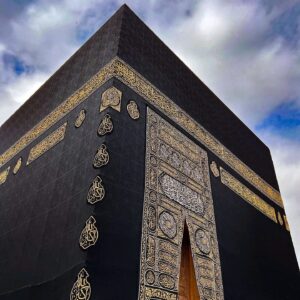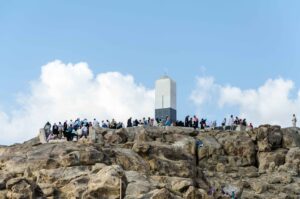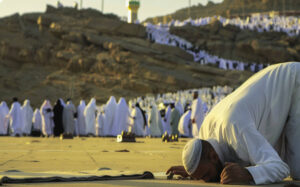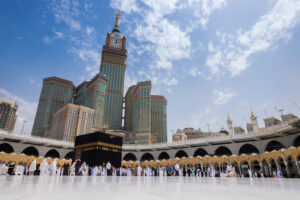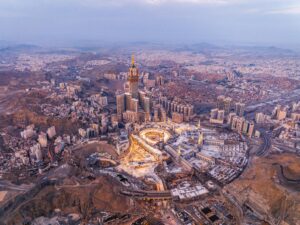Hajj is a religious duty but also an experience that engages Muslims from all nations in a sense of submission to the will of Allah (SWT). Through Hajj are essential moments that elevate the spiritual soul, whether it is standing in humble prayer on the plains of Arafah, gathering under the stars in Muzdalifah, throwing stones at the manifestation of rebellious disobedience in Jamrat Al-Aqabah, or the sacrifice of Adhahi, in all these important sacred rites lies meaning and spiritual significance to help Muslims truly experience devotion, submission, and patience.
Arafah Day
The Day of Arafah, observed on the 9th of Dhul-Hijjah, is widely considered the most critical part of Hajj. Known as the Day of the Greater Hajj, it is a day entirely devoted to prayer, reflection, and worship.
- Pilgrims gather in the plain of Arafah from midday until sunset.
- The standing at Arafah (Wuquf) is the core ritual, and Hajj is not valid without it.
- The Prophet Muhammad (PBUH) said: “Hajj is Arafah.”
- Pilgrims engage in heartfelt du’a, seeking forgiveness and blessings.
- This day is also highly recommended for non-pilgrims to fast, as it expiates sins of the previous and coming year.
Arafah Day is when faith is renewed and prayers are answered, making it the spiritual pinnacle of the steps of Hajj pilgrimage.
Muzdalifah in Hajj
After sunset in Arafah, pilgrims travel to Muzdalifah, a sacred land between Arafah and Mina.
- Pilgrims pray Maghrib and Isha combined upon arrival.
- The night is spent under the open sky, resting and reflecting.
- Pilgrims collect pebbles that will be used for stoning the pillars (Jamrat).
- This humble overnight stay embodies unity, humility, and submission.
The experience of Muzdalifah in Hajj reminds pilgrims that all believers are equal before Allah.
Jamrat Hajj
On the 10th of Dhul-Hijjah, pilgrims move to Mina to perform the Ramy al-Jamarat, beginning with Jamrat Al-Aqabah.
- Pilgrims throw seven pebbles at the largest pillar (symbolizing Satan).
- This act reenacts Prophet Ibrahim’s defiance of Shaytan’s temptation.
- It symbolizes rejecting evil, bad habits, and worldly distractions.
The Jamrat Hajj ritual is deeply symbolic, demonstrating resistance against temptation and emphasizing spiritual discipline.
Adhahi (Sacrifice)
Following the stoning, pilgrims offer the Adhahi, sacrificial animals, commemorating Prophet Ibrahim’s (AS) obedience when Allah (SWT) commanded him to sacrifice his son, Ismail.
- The act represents devotion and obedience.
- The meat is distributed: one-third to the poor, one-third to friends/family, and one-third for the pilgrim.
- The sacrifice is an essential ritual in Hajj, typically performed after the stoning on Eid al-Adha.
This ritual connects deeply to the spiritual and humanitarian aspects of Islam, reminding pilgrims to share and care for others.
Hajj Rituals Explained
- Arafah Day: Supplication and spiritual renewal.
- Muzdalifah: Collecting pebbles and reflecting under the stars.
- Jamrat Al-Aqabah: Symbolic rejection of Satan.
- Sacrifice During Hajj: A powerful act of devotion and charity.
These key rituals offer a unique opportunity for growth, purification, and transformation, allowing pilgrims to connect deeply with the holy Hajj journey through practice and reflection. And with Dur Hajj, your pilgrimage is thoughtfully planned and guided with experience, care, and a deep understanding of the sacred journey, so you can focus on what truly matters.

